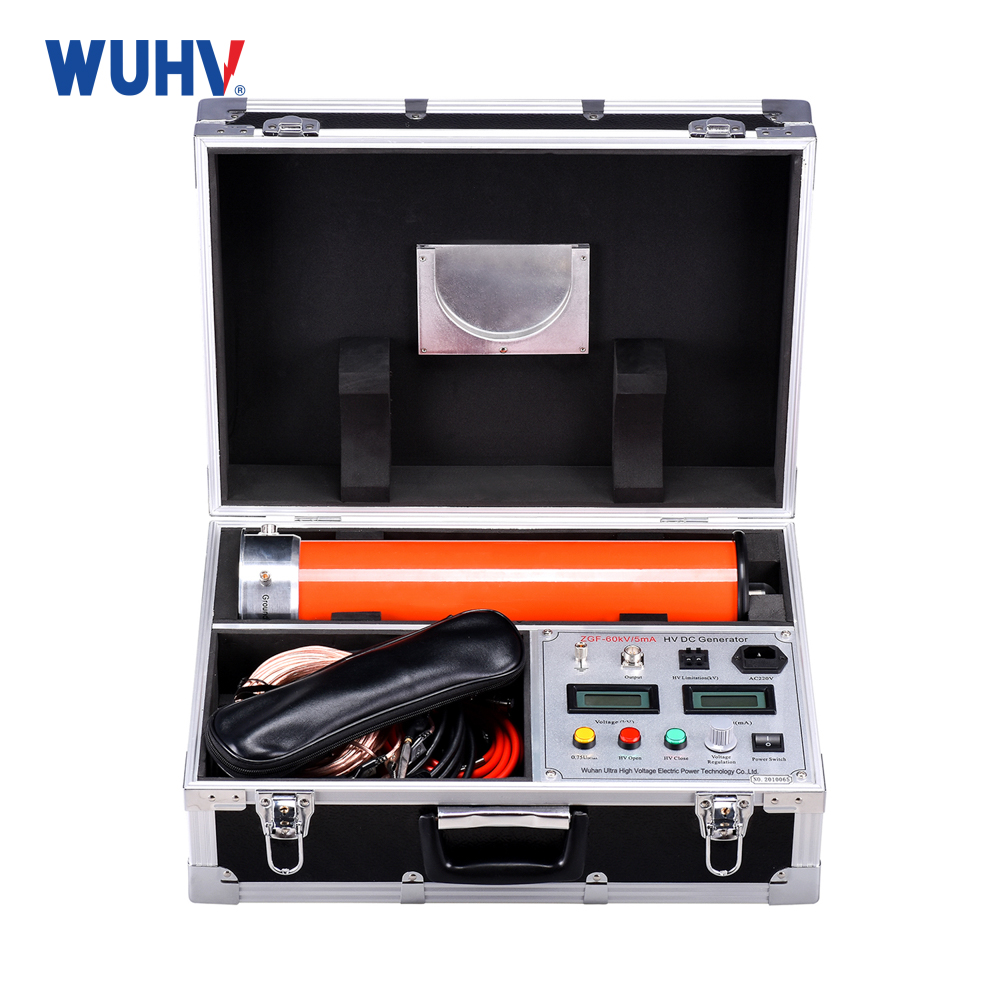The portable hipot testerunder UHV power company can help many power workers conduct various power tests more conveniently.
Wiring method and testing steps forportable hipot tester
The so-calledportable hipot testercan be called an electrical insulation strength tester, dielectric strength tester, etc. according to its function. Its working principle is to apply a voltage higher than the normal operating voltage to the insulation of the tested equipment, and maintain it for a certain period of time. Within the specified time, the voltage applied to it will only generate a small leakage current, resulting in better insulation. The testing system consists of three modules: a program controlled power module, a signal acquisition and conditioning module, and a computer control system. Choose two indicators for the voltage tester: high output voltage value and high alarm current value.
Wiring method for voltage tester:
1. Check and confirm that the main power switch of the voltage tester is in the "off" position
2. Except for special instrument designs, all non electrified metal parts must be reliably grounded
3. Connect the wires or terminals of all power input terminals of the tested device
4. Turn off all power switches, relays, etc. of the tested device
5. Adjust the test voltage of the voltage tester to zero
6. Connect the high voltage output line (usually red) of the voltage tester to the power input terminal of the device being tested
7. Connect the circuit grounding wire (usually black) of the voltage tester to the accessible non-conductive metal part of the tested equipment
8. Close the main power switch of the voltage tester and slowly increase the secondary voltage of the tester to the required value. The general boost speed does not exceed 500V/sec
9. Maintain the test voltage for the specified time
10. Reduce the test voltage
11. Turn off the main power switch of the voltage tester. Disconnect the high voltage output line of the voltage tester first, and then disconnect the circuit ground wire of the voltage tester
The following situations indicate that the tested device cannot pass the test:
*When the test voltage fails to rise to the specified voltage value or the voltage drops instead
*When the voltage tester has a warning signal
It should be noted that due to the dangerous high voltage present in the withstand voltage test, special care must be taken during the test.
The following points require special attention:
*It must be clearly stated that only trained and authorized personnel can enter the testing area to operate the instruments
*Fixed and obvious warning signs must be set up around the testing area to prevent other personnel from entering the danger zone
*During testing, all personnel, including operators, must stay away from the testing instruments and the tested equipment
*Do not touch the output line of the testing instrument during startup
Test steps for voltage tester:
1. Check if the "voltage adjustment" knob of the pressure tester is turned counterclockwise to the end. If not, please rotate it to the end.
2. Insert the instrument power cord and turn on the instrument power switch.
3. Choose the appropriate voltage range: Turn the voltage range switch to the "5kV" position.
4. Select the appropriate AC/DC voltage measurement gear: Turn the "AC/DC" switch to the "AC" position.
5. Select the appropriate leakage current range: Turn the leakage current range switch to the "2mA" position.
6. Preset leakage current value: press the "leakage current preset switch", set it at the "preset" position, and then adjust the "leakage current preset" potentiometer. The current value of the leakage current meter is "1.500" mA. Adjust the switch and switch it to the "test" position.
7. Timer Time Setting: Place the "Timer/Manual" switch in the "Timer" position, adjust the timer dial switch, and set it to "30" seconds.
8. Insert the high-voltage test rod into the AC voltage output terminal of the instrument, and connect the hook of the other black wire to the black terminal (ground terminal) of the instrument.
9. Connect the high-voltage test rod, ground wire, and the tested equipment (if testing an instrument, the general connection method is: connect the black clip (ground wire end) to the ground end of the tested power cord plug, and the other end of the high-voltage terminal plug (L or n). Note that the tested parts should be placed on an insulated workbench.
10. Start testing after checking the instrument settings and connections.
11. Press the "start" switch on the instrument panel, slowly adjust the "voltage stabilization" knob to start boosting, and observe the voltage value on the voltmeter to "3.00" kV. At this point, the current value on the leakage current meter is also increasing. If the leakage current value exceeds the set value (1.5mA) during the boosting process, the instrument will automatically alarm and cut off the output voltage, indicating that the tested component is unqualified. Press the "reset" switch to restore the instrument to its original state. Original state. If the leakage current does not exceed the set value, the instrument will automatically reset after the timing time, indicating that the tested component is qualified.
12. Using the "remote control test" method: Insert the five pin aviation plug on the remote control test rod into the "remote control" test end on the instrument, and press the switch on the test rod (to be pressed) to start. Aviation plugs, also known as plug sockets, are widely used in various electrical circuits to connect or disconnect circuits.




















